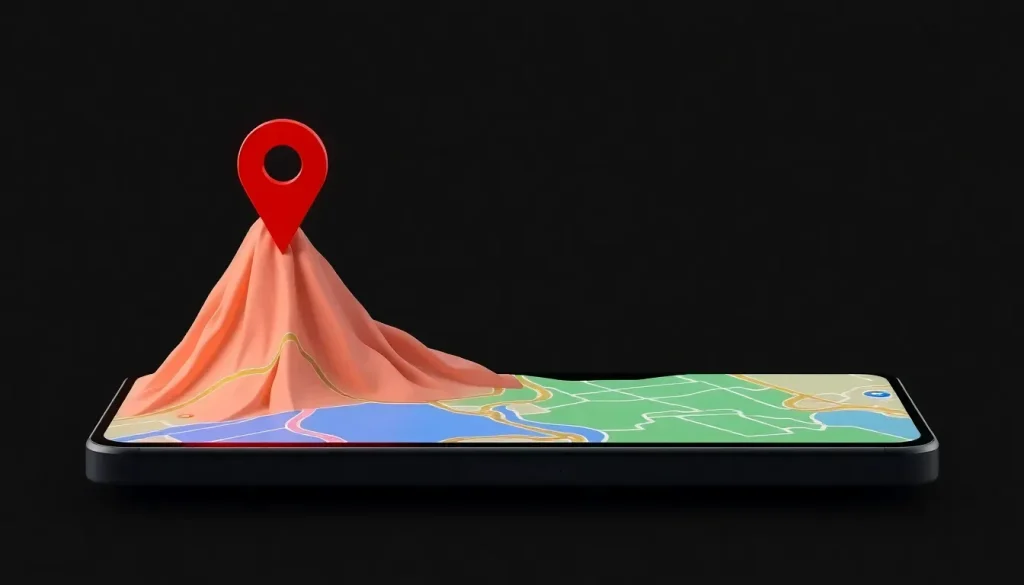Google Maps update: Gemini arrives and transforms navigation

Google has been at the forefront of technological innovation for years, and its latest integration, Gemini, marks a significant leap forward in user experience across its applications. With Gemini making its debut in Google Maps, users can expect a transformative shift in navigation, enhancing the way we interact with the app and access vital information on the go. This is not just an update; it's a reimagining of how users will navigate their environment.
As technology continues to evolve, Google's commitment to integrating artificial intelligence into its services is more evident than ever. From enhancing voice commands in Google Assistant to optimizing our navigation experience with Gemini, the tech giant is paving the way for a seamless interface between users and technology.
- What is Gemini and How Does it Enhance Google Maps?
- How to Activate Gemini in Google Maps
- What’s New in the Latest Update of Google Maps?
- Comparing Gemini with Google Assistant: What’s the Difference?
- Returning to Previous Versions: How to Revert Changes in Google Maps
- Future Developments: What to Expect from Google Maps and Gemini
What is Gemini and How Does it Enhance Google Maps?
Gemini is Google's latest AI initiative designed to enhance user interaction across various platforms, including Google Maps. This technology allows users to engage with the app more intuitively, providing responses that are not just reactive but also proactive. For instance, Gemini can analyze your travel patterns and preferences to suggest the best routes or stops along your journey.
With Gemini, users can:
- Communicate with the app using natural language.
- Receive personalized travel suggestions based on their habits.
- Modify routes on the fly without manual input.
- Access a broader range of information regarding destinations and stops.
This integration promises to make your driving experience smoother and more efficient by anticipating your needs and providing relevant information at your fingertips.
How to Activate Gemini in Google Maps
Activating Gemini in Google Maps is an easy process, especially for users enrolled in the beta program. This new feature is currently rolling out to Android users, with plans to expand to iOS in the future. To activate Gemini, follow these simple steps:
- Open Google Maps and tap on your account icon located in the upper right corner.
- Select the 'Settings' option from the dropdown menu.
- Go to the 'Navigation' settings.
- Find the 'Gemini' section and tap on it to select your preferred assistant, either Google Assistant or Gemini.
Once activated, the microphone icon during navigation will change to the Gemini icon, allowing you to interact with the AI seamlessly. Just tap on the icon and vocalize your request.
What’s New in the Latest Update of Google Maps?
The latest update, version 25.41.03.815390258, represents one of the most significant changes to Google Maps in recent years. Not only does it integrate Gemini, but it also enhances existing features to make navigation smarter and more efficient.
Key features of this update include:
- Enhanced voice recognition capabilities through Gemini.
- More intuitive route modifications based on user requests.
- Improved integration with other Google services, such as Calendar and Gmail, for a cohesive experience.
- Real-time traffic updates and alternative route suggestions.
This update signifies Google's ongoing effort to create a more interconnected and user-friendly ecosystem that responds to the evolving needs of its users.
Comparing Gemini with Google Assistant: What’s the Difference?
While both Gemini and Google Assistant serve as voice-activated assistants, there are notable differences between the two, especially in their functionality within Google Maps. Understanding these differences can help users choose which assistant best suits their needs.
| Feature | Google Assistant | Gemini |
|---|---|---|
| Voice Commands | Basic command recognition | Natural language processing, understands context |
| Route Modification | Manually triggered | Proactively suggests changes based on context |
| Travel Suggestions | Static suggestions | Dynamic, personalized suggestions |
| Integration with Other Apps | Limited interaction | Seamless integration with various Google services |
This comparison highlights how Gemini aims to provide a more engaging and efficient navigation experience, moving beyond the capabilities of Google Assistant.
Returning to Previous Versions: How to Revert Changes in Google Maps
If you find that the Gemini integration is not to your liking or if you prefer the previous functionalities, reverting back to the standard Google Assistant is straightforward. Simply follow these steps:
- Open Google Maps and tap on your profile icon.
- Navigate to 'Settings' and then 'Navigation'.
- Select the 'Gemini' section and opt for Google Assistant instead.
This flexibility ensures that users can tailor their experience according to their preferences, allowing for a personalized interaction with the app.
Future Developments: What to Expect from Google Maps and Gemini
As Google continues to innovate, the future of Google Maps looks promising. With ongoing enhancements to Gemini, users can expect more functionalities that leverage AI to make navigation smarter, safer, and more enjoyable.
Future updates may include:
- Enhanced real-time collaboration features for group travel.
- Even more personalized travel recommendations based on user history.
- Integration with local businesses for tailored promotions during routes.
These potential updates not only highlight Google's commitment to improving user experience but also its dedication to integrating AI in ways that are meaningful and impactful.
For more insights and a visual guide on these updates, check out this video that explains the upcoming changes in detail:
With the powerful integration of Gemini into Google Maps, users are set to experience a revolutionary shift in how they navigate the world around them. This is just the beginning of a new era in AI-driven applications, and staying updated on these developments is crucial for maximizing the benefits of these advancements.




Leave a Reply